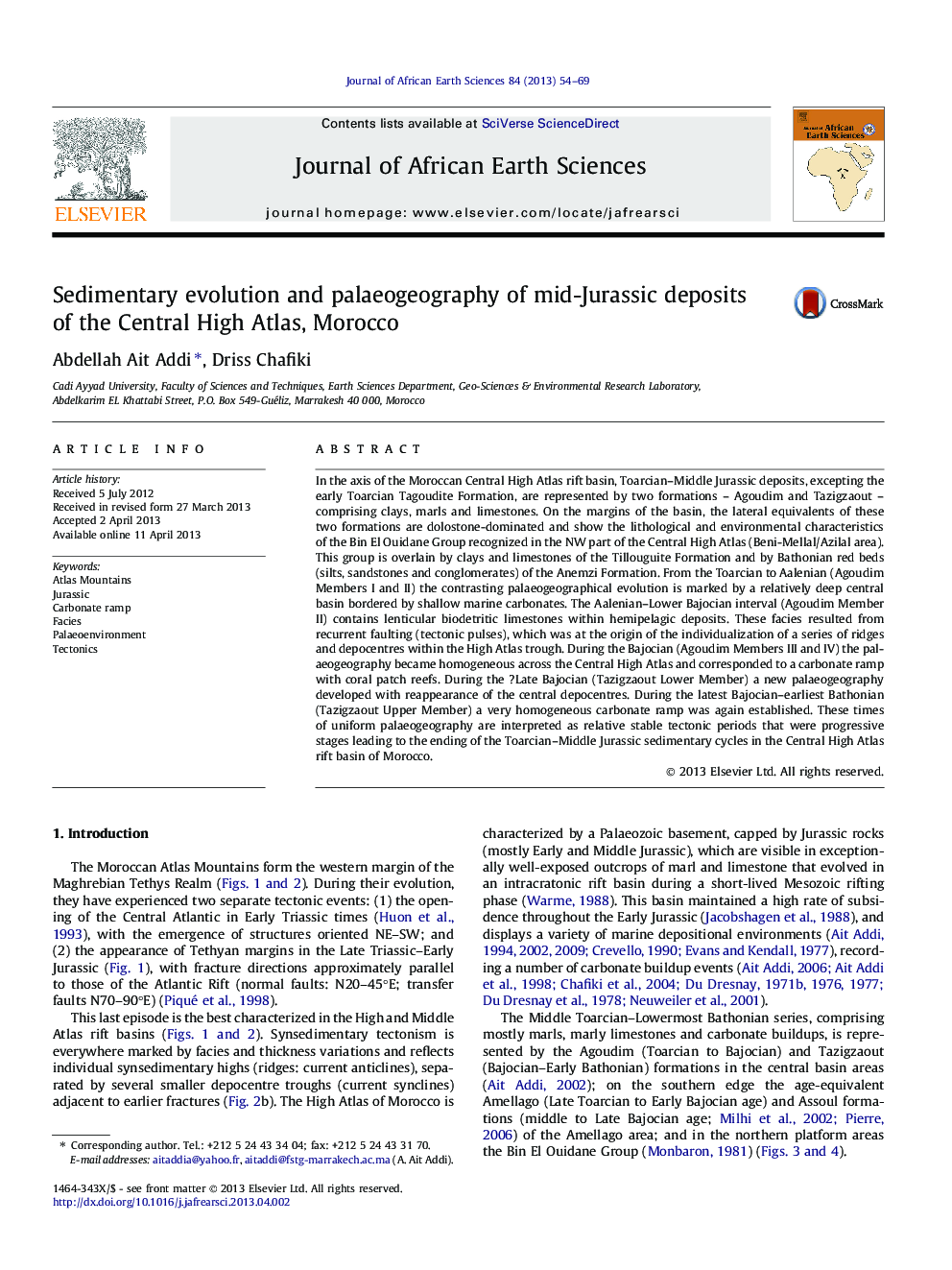| Article ID | Journal | Published Year | Pages | File Type |
|---|---|---|---|---|
| 4728924 | Journal of African Earth Sciences | 2013 | 16 Pages |
•Central High Atlas rift basin mid Jurassic show successive palaeogeographic changes.•Contrasted palaeogeographic landscapes during Latest Toarcian–Early Bajocian time.•Paroxysmal uplifting of Liassic ridges during Aalenian–Early Bajocian.•Bajocian–Early Bathonian records the generalization of a new thick carbonate ramp.•Bathonian continental red bed records the end of the Jurassic sedimentary cycle.
In the axis of the Moroccan Central High Atlas rift basin, Toarcian–Middle Jurassic deposits, excepting the early Toarcian Tagoudite Formation, are represented by two formations – Agoudim and Tazigzaout – comprising clays, marls and limestones. On the margins of the basin, the lateral equivalents of these two formations are dolostone-dominated and show the lithological and environmental characteristics of the Bin El Ouidane Group recognized in the NW part of the Central High Atlas (Beni-Mellal/Azilal area). This group is overlain by clays and limestones of the Tillouguite Formation and by Bathonian red beds (silts, sandstones and conglomerates) of the Anemzi Formation. From the Toarcian to Aalenian (Agoudim Members I and II) the contrasting palaeogeographical evolution is marked by a relatively deep central basin bordered by shallow marine carbonates. The Aalenian–Lower Bajocian interval (Agoudim Member II) contains lenticular biodetritic limestones within hemipelagic deposits. These facies resulted from recurrent faulting (tectonic pulses), which was at the origin of the individualization of a series of ridges and depocentres within the High Atlas trough. During the Bajocian (Agoudim Members III and IV) the palaeogeography became homogeneous across the Central High Atlas and corresponded to a carbonate ramp with coral patch reefs. During the ?Late Bajocian (Tazigzaout Lower Member) a new palaeogeography developed with reappearance of the central depocentres. During the latest Bajocian–earliest Bathonian (Tazigzaout Upper Member) a very homogeneous carbonate ramp was again established. These times of uniform palaeogeography are interpreted as relative stable tectonic periods that were progressive stages leading to the ending of the Toarcian–Middle Jurassic sedimentary cycles in the Central High Atlas rift basin of Morocco.
